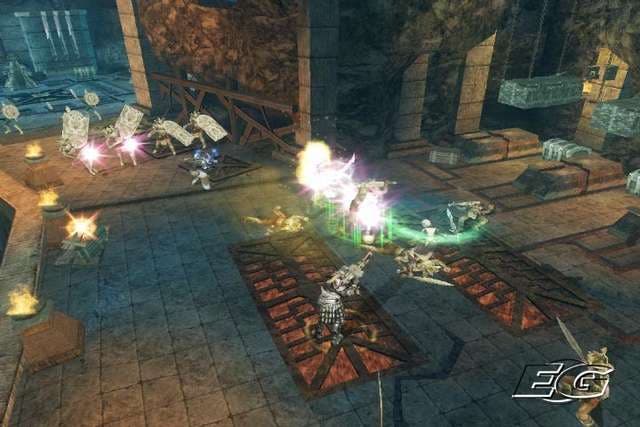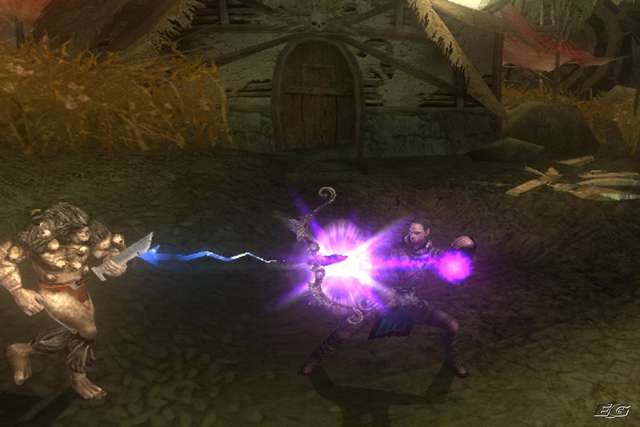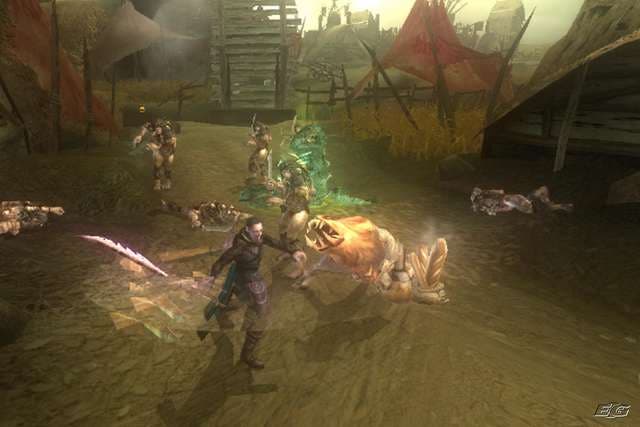Gauntlet: Seven Sorrows
Gauntlet and I have a bit of history together.
Gauntlet and I have a bit of history together.
As a mere nipper, I'd heard of Ed Logg's classic arcade dungeon hacker, but I'd never seen it in it's natural habitat. So, you know, like many, I dabbled in the odd home version. But I'll be honest - it just didn't make sense. Playing it alone, it just seemed the most abusively unfair game you could choose to play - as your health constantly fell, you'd find yourself continuously surrounded by enemies you'd never manage to vanquish, spawning endlessly from generators you'd never reach - heading towards... Towards what?
Towards Blackpool, the late eighties. Like any other child of the time, the usual holiday was a trip down to a dismal beach resort that, nonetheless, I'd look forward to with a feverish anticipation - because I knew as soon as I got there, they'd give me a cup full of 10p pieces and set me loose in the amusements. And one day, wandering one of the many arcades that lined Blackpool's seaside strip, my cash reserves dwindling, I finally found a live Gauntlet machine. 10 pence a go.
There was a teenager already playing it, faded rock t-shirt and torn leather jacket, a spotty giant, impossibly older and wiser than I. But someone who wouldn't mind me playing, I hoped. I slipped my first 10p into the machine.
Watching, barely keeping up with this wizard in the game and at the controls, it all started to make sense. The player is running the gauntlet. It's a race against time, it's a race for survival, and the player must cut your swathe through the enemies to the exit as quickly, as efficiently, as possible. And it was fantastic.

Until, in one of the most maze-like, twisting levels, I found myself stuck on one side of a wall, and him on another. You see, Gauntlet, had to constrain the players by keeping them together on the same screen. If one got stuck, or left behind, the others couldn't forge ahead. You had to work together. One for all, and all for one.
Unless you're a teenager who, until this point, has been riding a machine on 10p all day, and it strikes you that screaming at an 9 year old to move to the LEFT, NO, WAIT, THE RIGHT, UP, NO, ARE YOU STUPID, is the way to go about things.
I don't think I've played Gauntlet since.
Upon playing Gauntlet: Seven Sorrows alone for any length of time, it's not unlikely that you'll come to the same conclusions I did of the original Gauntlet - it's boring, and, if you're playing it on anything other than easy, it's hard. With the traditional choice of Warrior, Elf, Valkyrie and Wizard, if you're determined to play your way through the game solo you'll either have to pick the Warrior or be prepared to die repeatedly. Indeed, the Wizard is completely ineffectual on his own, as he relies on his projectile attack, a cute if less than useful nod to the original game's attacks, and his mana blasts, attacks shared by the others, who back them up with a far beefier range of hacks and slashes. You can also block, a skill that only becomes particularly useful if you can ensure your back is covered (therefore, in single-player, effectively useless), but if you get yourself into a groove, you can find yourself happily mowing through hundreds of enemies and destroying generators, using several 'special moves' and pleasing combination attacks, both of which you can purchase between levels using gold claimed from chests - with each chest a test to see if you can you avoid the appearance of (completely incongruous series stalwart) Death, who can only be destroyed, for some reason, with an mana blast.

Gauntlet: Seven Sorrows had a troubled gestation. Both project lead John Romero(!) and lead designer J.E. Sawyer left the project early on, and it's interesting to note that while Romero at least manages a 'Special Thanks' listing in the credits, Sawyer is nowhere to be seen, but more pertinently their departure is a hint to the schizophrenic nature of Seven Sorrow's design. Originally intended to lean heavily in the direction of the Baldur's Gate: Dark Alliance series of action RPGs, the watered down result - Gauntlet where you buy combos and gain levels increasing your damage, health, and mana regeneration - only serves to make the game more frustrating in solo mode, as you find yourself either having to replay levels endlessly to gain levels or face bashing your head against difficulty spikes with a depressing regularity.
While we can't be sure exactly how much Romero and Sawyer contributed to the final product, if the RPG stylings were Sawyer's legacy, then we can be fairly sure that the level design is Romero's. The levels are often beautiful, with the glowing ethereal final levels worth particular mention, but are linear to the point of stupefaction, a far cry from the original Gauntlet's horrifyingly mazed contortions. The very lowest point of design is saved for the very end - with a final boss (and trust me here when I say I'm not spoiling anything) whose chosen to live in an area that houses five siege-grade ballistas all pointing at his head. I'm sure there are more sensible places to stand if you're the ultimate evil.
However, much like the original Gauntlet, the only way to play this is in multiplayer. Midway seems to be one of the few companies that remembers (realises?) that the PS2 has a broadband adaptor and offers what would be a competent game for up to four (North American) players were it not crippled by lag, and the mistake, or decision, to include a feature that's been with Gauntlet since day one. One for all, and all for one.

If one player decides to be a jerk, sadly more often than not on the internet, they can hold the game up forever by standing at one side of the screen and not moving. Indeed, if you find yourself with a sliver of health, and a tasty t-bone steak tantalisingly out of your grasp, you'd better hope that the battle swings your way, or be prepared to die, and wait until your team-mates reach the next respawn point. These flaws break the online game so much that it's pointless, particularly compared to the single-machine two-player mode. While little more than a brainless dungeon hack, the teamwork requirements and exciting action make blasting through the game with someone else a great use of a lazy Sunday afternoon - the main game clocking in at a mere 3-5 hours.
Sadly, while fun once through, the broken online component and repetitive design means this'll soon be consigned to a dusty game shelf never to be played again. That's if you can make it through the game without arguments - you see, if you'll just listen, you've got to go left, no, LEFT, UP, UP, KEEP GOING UP, WHAT, ARE YOU STUPID? OH FOR GOD'S SAKE, YOU'RE GOING TO HAVE TO GO RIGHT NOW.








